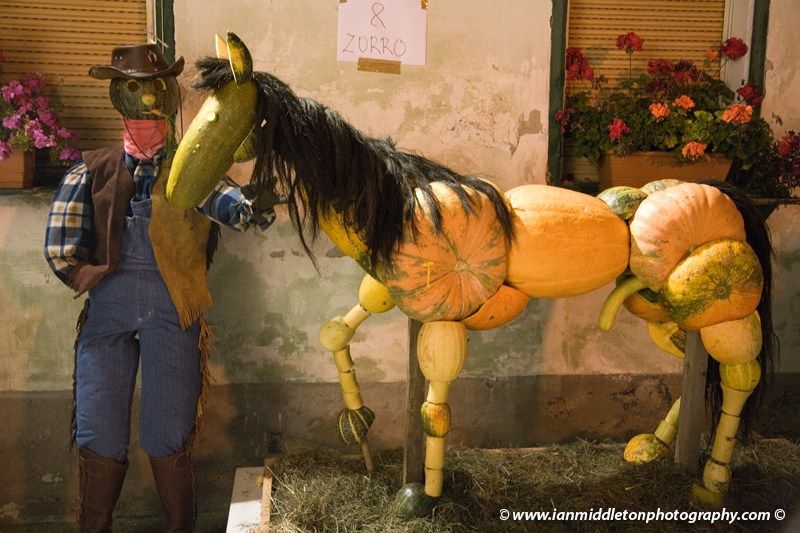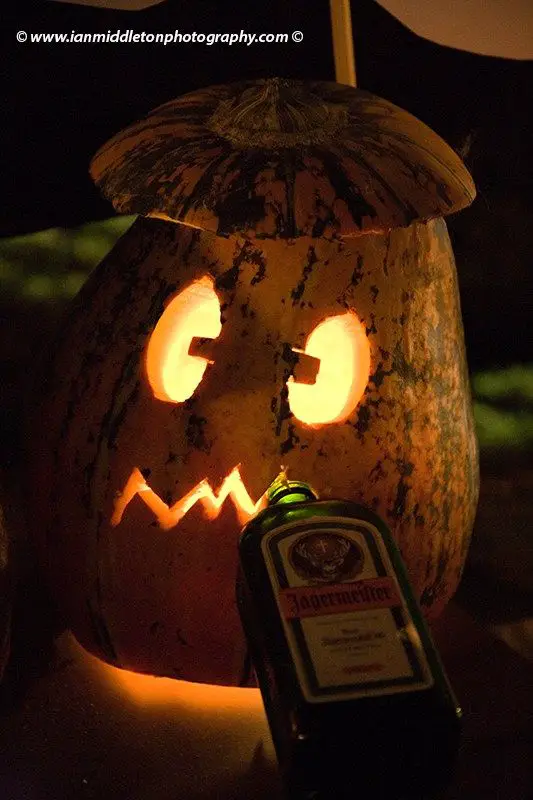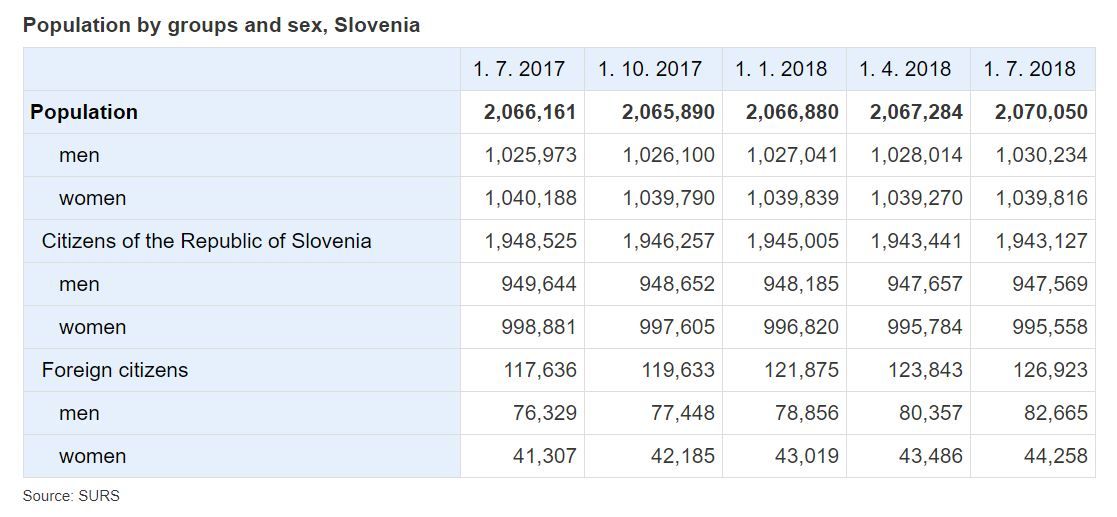Lifestyle
STA, 1 November 2018 - There were a total of 2,070,050 residents in Slovenia at the beginning of July 2018, which is 3,170 more than at the beginning of January, but the number of Slovenian citizens living in the country was down, while the number of residents with foreign citizenship increased.
The share of foreigners in the total population was up to 6.1%, with their number standing at 126,923, the Statistics Office has reported.
In the first half of the year, the number of Slovenian citizens living in Slovenia was down by almost 1,900, while the number of foreign citizens was up by more than 5,000.
At the beginning of July, there were 1,030,234 men and 1,039,816 women living in Slovenia. The share of women, which has been very slowly decreasing for a number of years, was 51.2%.
The share of women among the foreign citizens living in Slovenia was 34.9%. The share was up by 1.8 percentage points in the last four years.
Related: The places where foreigners live in Slovenia and where they come from
STA, 31 October - The Protestant Reformation was like a breath of fresh air to the stifling social and religious atmosphere in Slovenian lands. It is credited with giving Slovenians the first books in Slovenian, thus encouraging a sense of national identity.
STA, 31 October 2018 - Up until a few years ago, most Slovenians considered Halloween to be nothing but a holiday imported by those looking to make a buck off gory costumes. But recently, it has become quite popular. Although trick or treating is not an established tradition in Slovenia, a number of grizzly events in dark medieval castles more than make up for it.
Slovenians may have it even better than Northern Americans: apart from Halloween parties taking places in authentic ancient castles, many of which have their own very real and sinister witch inquisition stories, Slovenians also get the day off, as the country observes Reformation Day on 31 October.
While Halloween parties for children will be held already in the morning, the really terrifying get-togethers will attract witches, warlocks, vampires and zombies to a number of meeting places across the country in the evening.
Witches will take over Bled Castle, one of the most prominent tourist landmarks, in the evening, while Bogenšperk Castle, some 20 kilometres east of Ljubljana, will become a bewitched market place

©Ian Middleton. See more of this Halloween photos here.
Olimje, a town with a castle said to be a thousand years old, will host a Witches' Conference. Focusing on youth potions, the conference agenda will reflect the fact that Olimje has the third oldest pharmacy in Europe and the maker of the most effective potion will be awarded a jar of pickled bats.
The witches and warlocks more interested in physics than good looks will get the chance to go over the newest research looking into ways to make one's broom fly faster.
Many more events will be held all across the country, all of them featuring a number of activities for children, including magic spell contests and pumpkin carving workshops.
Halloween fans from Northern America may envy Slovenians one more thing: the day after Halloween is a bank holiday as well.
While true Halloween fans may use it to sleep off wicked hangovers, most Slovenians will head for the cemeteries, as the country observes All Saints' Day.
While the two holidays stem from the same pagan tradition, they are different in nature, according to sociologist and philosopher Mirt Komelj.

©Ian Middleton. See more of this Halloween photos here
"On the one hand we have this secular holiday that tries to reign in the fear of death and the dead by allowing people to put on scary costumes, and on the other is the day we remember our dead and visit their graves."
Although our society likes to think of itself as modern, global and civilised, the fear of death and dying is very real and requires methods involving the society as a collective to overcome it, said Komelj, underlining that Halloween and All Saints' Day must be studied as related units.
He believes that Halloween is here to stay, although the ways to celebrate it may change in the future.
STA, 30 October - Slovenians use as many as 16 million candles a year to decorate graves, which ranks the country third in the world per capita. However, the tradition of honouring the dead in this way, which is especially prominent around All Saints' Day, could cause an ecological disaster.
Throwing wet wood in your furnace or materials that don't belong there may result in fines from €1200 to 4100.
STA, 29 October2018 - The battle for the church at the Križanke open-air theatre which was returned to the Teutonic Order in a lengthy denationalisation process in March last year continues, as Festival Ljubljana, which manages the church, has still not handed over the keys. The Teutonic Order has now turned to the court, Dnevnik reports on Monday.
STA, 29 October 2018 - Slovenian households recorded one of the highest saving rates in recent years in 2017, with the average household saving EUR 1,750. At 13.9%, the gross household savings rate was also one of the highest in Europe, where the average was 9.9%, the Statistics Office said.
Where clubbers can learn what’s in their pills and prevent a party turning into a nightmare.
This week’s focal event is Halloween, which occurs on Wednesday, with plenty of horror movies and themed club nights if you want to go out and celebrate that way. It’s also the half-term break, so don’t be alarmed if you see a lot of kids on the streets during school hours – they’re (probably) not doing anything wrong. Finally, Wednesday and Thursday are national holidays, Reformation and Remembrance Day, and some things, including supermarkets, are closed.
STA, 25 October 2018 - The average age of Slovenians who died last year was nearly 77.7, which compares to 68.8 in 1987, the latest data by the Statistics Office (SURS) show. Men die younger than women, while Mediterranean lifestyle appears to have a positive effect on health.
STA, 25 October 2018 - Slovenians will observe Sovereignty Day on Thursday, remembering 25 October in 1991, when the last Yugoslav People's Army soldiers left Slovenian territory four months after the end of the Independence War.





